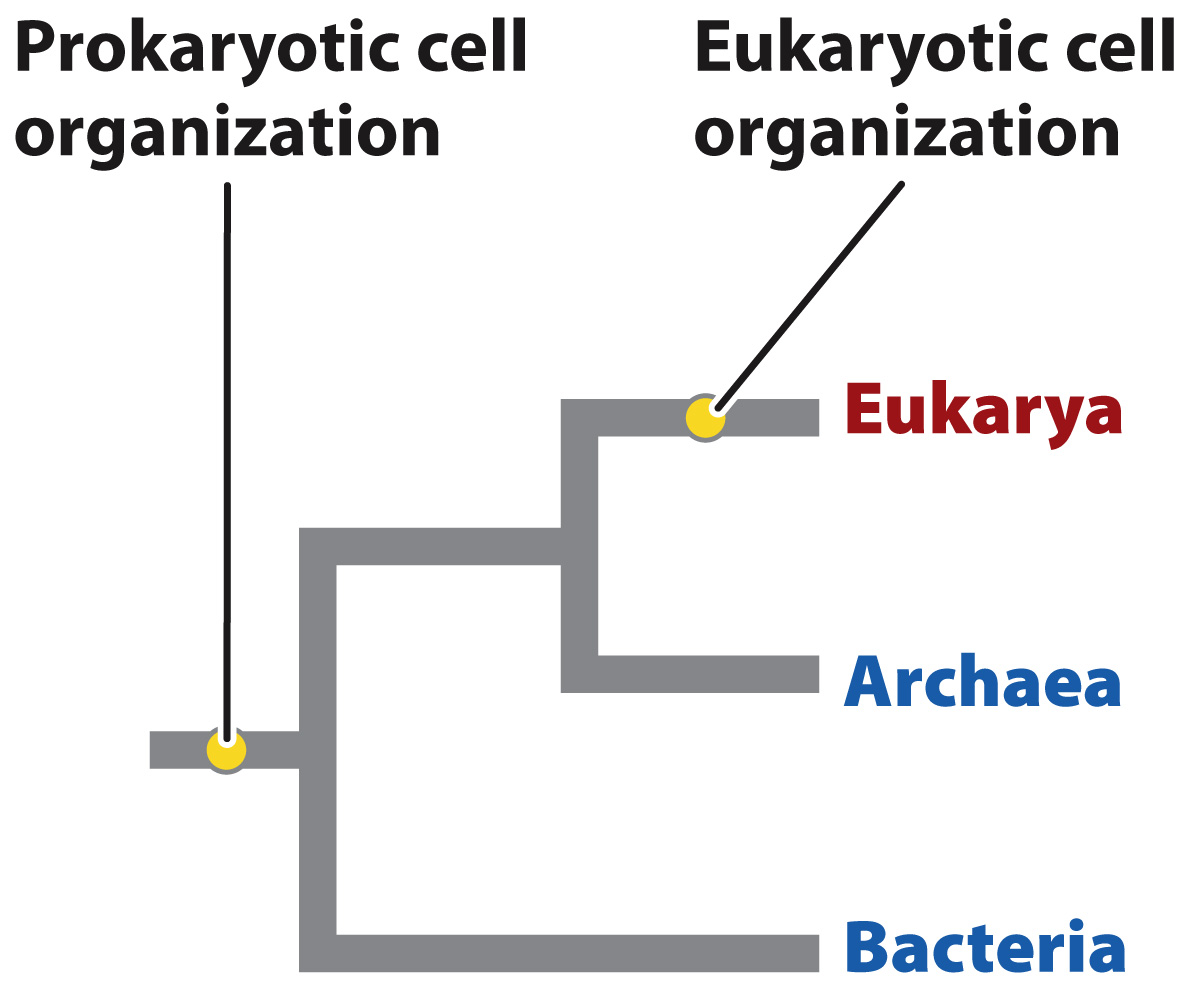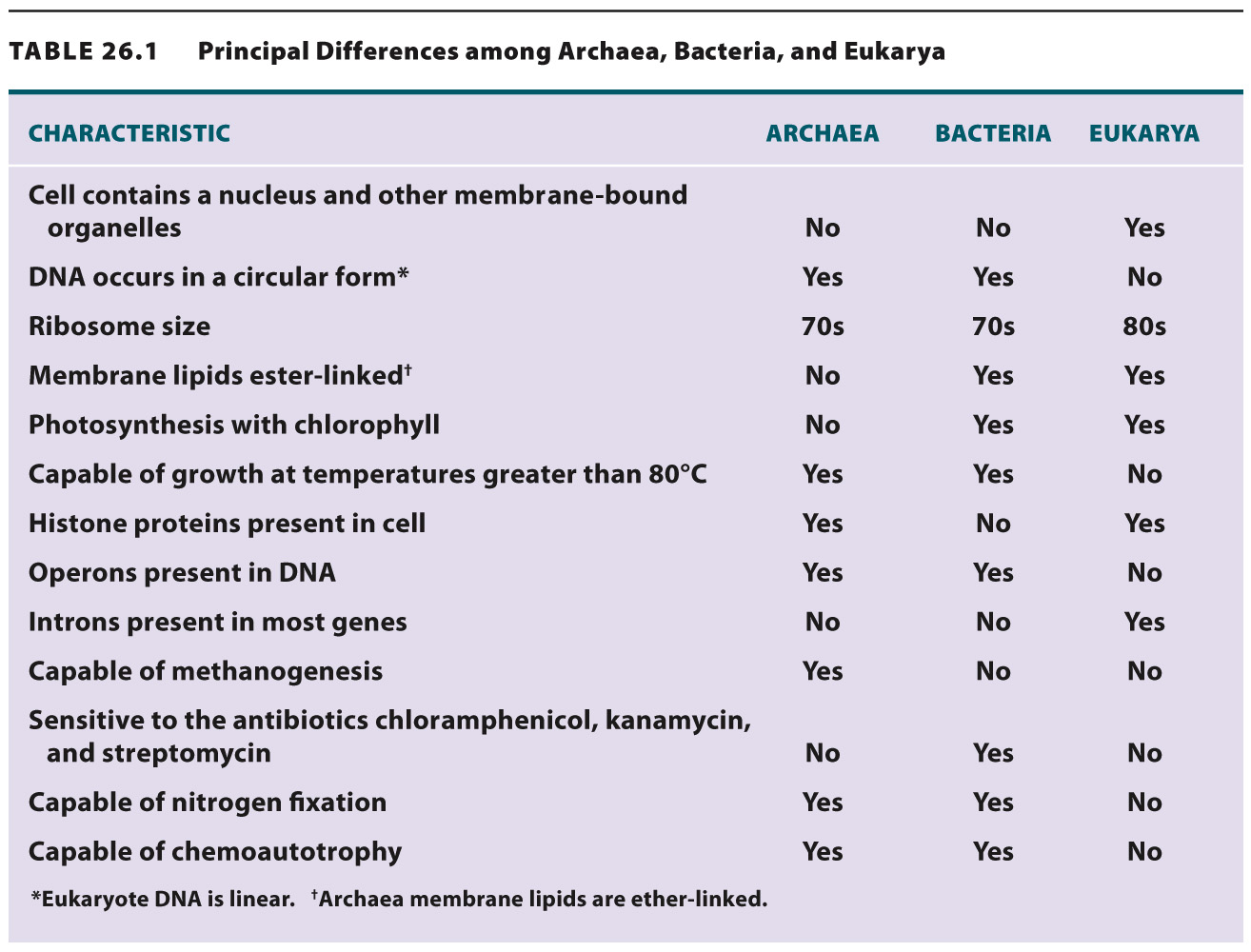Archaea form a second prokaryotic domain.

For many years, all prokaryotic cells were classified as bacteria. However, in 1977, George Fox and Carl Woese published a revolutionary hypothesis. From comparisons of RNA molecules from the small subunits of ribosomes (and later, comparisons of the genes for these RNAs), Fox and Woese argued that prokaryotic organisms actually fall into two distinct groups, as different from each other as either is from eukaryotes. If this is true, the tree of life must have three great branches: Bacteria, Eukarya, and the limb recognized by Fox and Woese, called Archaea (Fig. 26.5). Research since the late 1970s confirms this hypothesis. Like bacterial cells, archaeal cells are prokaryotic—
In detail, however, Archaea are quite distinctive (Table 26.1). Their membranes are made from lipids different from the fatty acids found in bacterial and eukaryotic membranes. Archaea also show a diversity of molecules in their cell walls, but none has the peptidoglycan characteristic of Bacteria or the cellulose or chitin found in most eukaryotic cell walls.

Archaea differ from Bacteria in another intriguing way. DNA transcription in archaeons employs RNA polymerase and ribosomes more similar to those of eukaryotes than to bacteria (Chapter 3). Moreover, many of the antibiotics that target protein synthesis in bacteria are ineffective against archaeons, suggesting fundamental differences in translation as well.
Many of the microorganisms first identified as Archaea have unusual physiological properties or inhabit extreme environments. For example, some archaeons live in acid mine water at pH 1 (or less!). Others live in water salty enough to precipitate NaCl (Fig. 26.6) or in deep-
535

Quick Check 2 Why were Archaea originally thought to be simply unusual forms of Bacteria? What lines of evidence showed this domain to form a distinct branch on the tree of life?
Quick Check 2 Answer
Archaeal cell and genome organization are similar to those of Bacteria. It was only through the use of molecular sequence comparisons that Archaea were shown to occupy a distinct branch on the tree of life. Continuing research on membrane lipids, cell wall chemistry, and gene transcription and translation confirm that Archaea are distinct from bacteria.